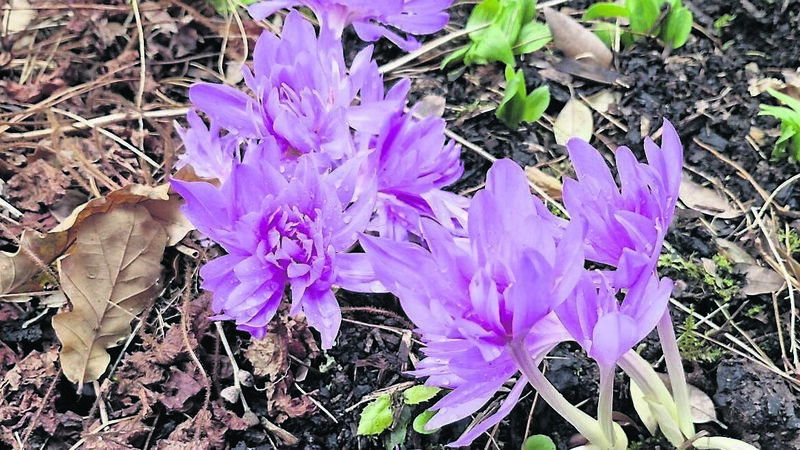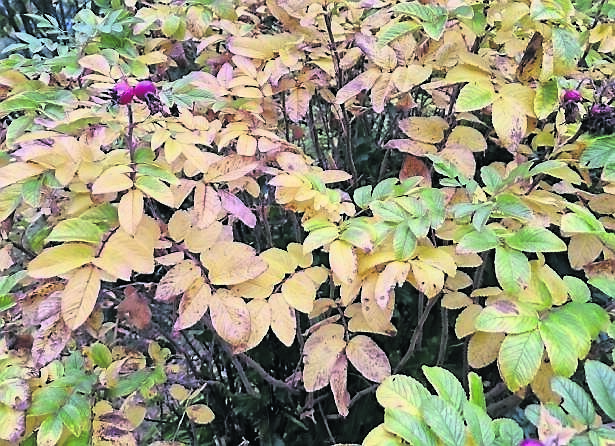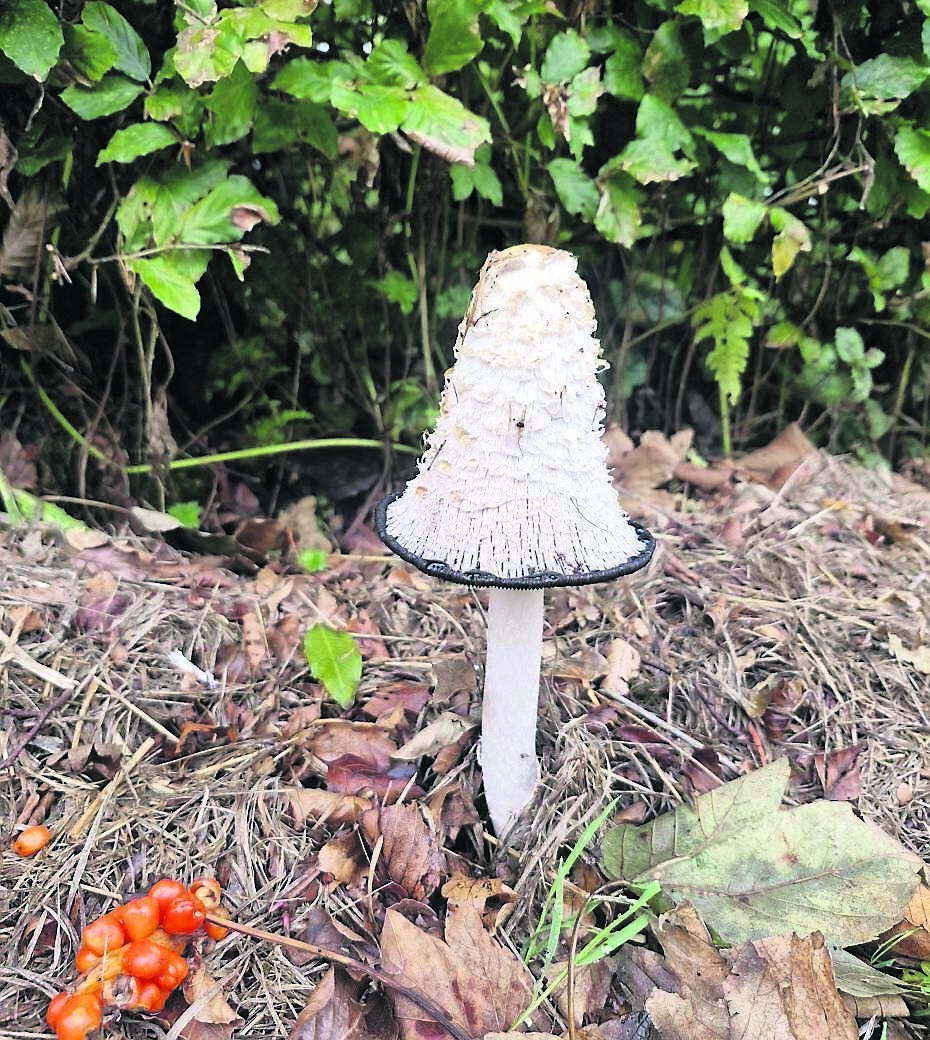In the Garden: Time to plant bulbs now...

Colchicum ‘Waterlily’ is a double autumn crocus, the flowers of which resemble those of waterlilies - see Plant of the Week.
Temperatures are beginning to reflect the time of year over the last week or two, with night- time temperatures into low single figures and a grass frost in evidence early in the morning.
It’s timely, then, to bring any tender plants indoors for the winter months. Pelargoniums, dahlias, and succulents are best overwintered inside in a dry, frost-free location like a garage or shed, where they can be stored and re-potted in springtime, before planting out once the major risk of frost has passed.
Plants are slowing down and preparing to rest for the winter months as the deciduous leaves turn and begin to fall to the ground and return to the soil.
It will soon be time to begin gathering leaves for annual leaf mould creation. It really is a magical substrate that provides nourishment, retains water, and improves the structure of the soil, as well as feeding soil microbes and insects, and we can create it for free in our own gardens.
All that is needed is a rake and a black bag to store the leaves, which will need to be left to break down for at least a year or two.
Puncture a few holes in the bottom of the black bag to allow for aeration and drainage of any excessive moisture build-up. If a larger amount of leaves are to be collected, then it might be worth considering creating a bay for them with pallets and piling them up over the coming weeks.
Leaf blowers are very useful for leaf collection over large areas, although it could be argued that they do create more disturbance for habitat, even if only for a short time. A fan-shaped plastic rake is one of the best tools for the autumn leaf collections on a smaller scale.

Autumn leaf colour is beginning to light up the garden, with the butter yellow foliage of rosa rugosa illuminating hedges and borders.
It is lovely to get some dry days with cooler temperatures before the foliage drops, to appreciate some of the seasonal changes autumn has to offer in the garden.
Berries abound at this time of the year, before the birds have gotten really hungry, and whitethorn, mountain ash, cotoneaster, and holly are all laden with fruit this autumn.
There are plenty of fungi appearing in the garden and it appears to have been a good year, with lots of field mushrooms in evidence.
They do not last for very long though, so regular observation is needed to get them at their best.
As with all foraging, it is very important to know what you are collecting as some may look similar and be poisonous, so best not to take any chances and make any collections for eating with somebody that has plenty of experience.

They really do provide attractive seasonal diversions, with colourful (poisonous) ones like the red fly agaric catching the eye, and the distinctive shaggy ink cap bringing an air of whimsy to the garden.
Now is a great time for spring bulb planting as the temperatures drop, and the recent rain has made the soil easier to dig after a dry September.
It is a good idea to accumulate a range of bulbs and then undertake the planting once all or most purchases are complete. This will avoid over-planting or digging up bulbs already planted, if planting is staggered and done in different stages.
As a general rule, a bulb should be planted at two or two and a half times its depth - the bigger the bulb, the deeper it needs to be planted.
It is also advisable to wait until a period of cold has started before getting bulbs into the ground as this will delay the start of growth, ensuring that bulbs do not emerge from the soil too early.
A lot of spring-flowering bulbs require a cold spell to stimulate flowering. Daffodils, crocus, and tulips are some of the best and there are so many varieties to choose from, with new varieties emerging every year.
Adding new types annually is a good idea to add interest and observe what does best in any given soil type and location.
Generally, daffodils and crocus will naturalise well, reappearing every year in bigger groupings as the buIbs multiply vegetatively underground.
Tulips will flower best in their first year and tend to fade away gradually in the subsequent years as the bulbs either rot in the ground or succumb to virus or fungal infection.
Spring-flowering bulbs are some of the hardiest, pushing through the frost and snow sometimes to reveal their flowers and provide us with hope for the growing year ahead.
Planning the spring display now will ensure plenty of new interest bubbling to the surface when we most need a diversion to get us out and about next spring.
Happy bulb purchasing and planting this autumn.
Plant of the Week
An autumn-flowering bulb that is pushing to the surface of the soil right now is the show-stopper that is autumn flowering crocus, or Colchicum ‘Waterlily’.
With its large, showy, double pink/purple flowers that appear from September onwards, it is the ideal bulb to naturalise in areas of grass under mature trees to provide interest later in the year.
Ideally, the bulbs should be planted in late summer to allow for flowering shortly afterwards. They will do best in a well drained fertile soil in full sun but will tolerate some shade.
These are best grown in sheltered location as the flowers are blousy and brittle, needing some shelter to look at their best.






 App?
App?





